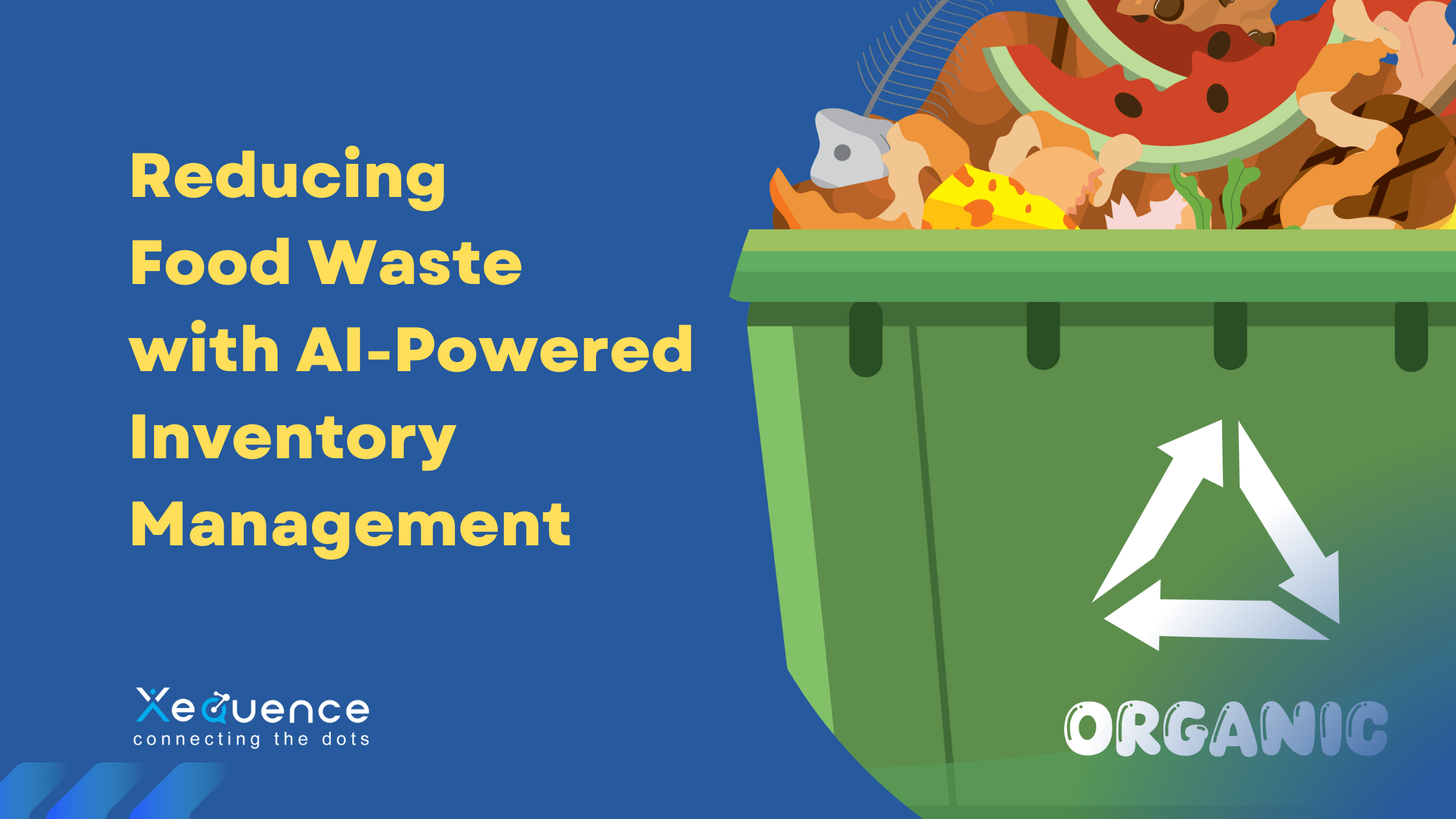- Home
- Artificial Intelligence
- Reducing Food Waste with AI-Powered Inventory Management
Reducing Food Waste with AI-Powered Inventory Management
- August 17, 2025
- Rajib Kar
- Artificial Intelligence, Chatbot, Hotel Management

AI-Powered Inventory Management to reduce the food waste in your restaurant
Are you running a restaurant business? If yes, reducing food waste could be a great initiative for your business. Every year, many food items are thrown outside by the restaurants. As per data given by The Food and Agriculture Organization (FAO) of the United Nations, near about 28% percent of all food produced in the world is lost or wasted. That alone can feed billions, and not only is it a humanitarian problem but it is also an environmental and a financial one. So, what would happen when we turn the tide with smart technology? The question is what would happen to waste food levels were it possible to plan to meet demand and better manage supply to ensure such food was never wasted.
The Secret of Inventory Administration
A web of choices based on the quantities to be ordered, when to order, and an estimate of how long it will last is behind every dish ordered in a restaurant and every grocery shelf. Miscalculate it and you end up losing your produce, shelves with nothing in them, or customers who are angry.
Where the old method of inventory management used to be a spreadsheet nightmare, it is now a first-line swing at waste. When correctly utilized, it will guarantee that each tomato, loaf of bread, or gallon of milk is bought, stored, and consumed at the opportune time. What happens when it is done wrong? This is the time when food waste accumulates, and so do losses.
Demand Forecasting:
By using hundreds of variables, AI can be used to predict the future of sales, which prevents the pitfall of excess or insufficient supplies. An example of this would be assuming that your cafe sells more salads during hot deprived days; AI will pick this up and make the rearrangement of your inventory on its own.
Expiration Tracking:
Some of the AI-oriented solutions can be connected to a barcode system or smart-fridge that is capable of monitoring the expiry dates and shelf-life in transit. This implies that the employees will be in a position to use the item before it will be spoilt resulting into very less waste.
Automated Ordering:
AI is not content to recommend and can. The automated restocking systems have a software solution that makes purchasing decisions/orders according to real-time information to reduce human judgment and/or the tendency to buy in large quantities.
Dynamic Pricing Recommendations:
Other AI tools go as far as making suggestions on dynamic pricing moves to sell off products nearing expiration and transforming something that could have gone to waste to an eleventh-hour bargain depending on the shopper. Concisely, AI makes inventory cease to be a guess, but more of a data-based approach.
The Difference that AI is Making
Inventory powered by Artificial Intelligence is not such an unrealistic idea anymore; it is a trend that is washing over the food industry. The Too Good To Go app uses the algorithms for pairing up users with superfluous restaurant and bakery food at a reduced price. Their technology assists restaurants in managing food waste as the day winds up- making sure that the people consume food and not dustbins.
Business Tips and Tips to the Consumers
Establish the correct information regarding sale, waste and inventory turnover. This information can be included in an AI tool later on, even with the simplest POS systems. Integrate the tools that are scalable and easy to integrate. Such enterprises are the AI platforms that are focused only on small and medium enterprises. Depending on what size you are, and can budget, CRM can be adjusted.
What shall we tell it to the consumers? They are making their AI to go even into your kitchen. Waste management since you have and keep track of your groceries, apps such as no waste or Olio can recommend recipes to you based on the ingredients in your pantry as well as allow you to connect with your neighbors to give away extra food.
To sum it up
Inventory management that uses AI as its power source is not only a fancy tool in the struggle against food waste but also a great ally. AI allows companies to optimize the way stock is viewed, saving money and generating less wastage and generally becoming more sustainable by tracking the stock in real-time and projecting demand. But what matters more is that it also reminds that technology can be not just smart, but compassionate as well, a method to feed people rather than landfills, purpose and profit in equal doses. That is why the next time you bite into a perfect fresh dish, you will remember about the algorithms that live behind the metaphorical curtain. Since when food gets an AI it is not only efficient, it is also deliciously sustainable.
Recent Posts
Newsletter
Get regular updates on data science, artificial intelligence, machine
You may also like

AI vs Human Travel Agents: Who Will Lead the Future of Travel?

How AI Is Revolutionizing Flight Operations and Airline Economics

10 Things that AI Travel Assistants Can Do Better than Humans




